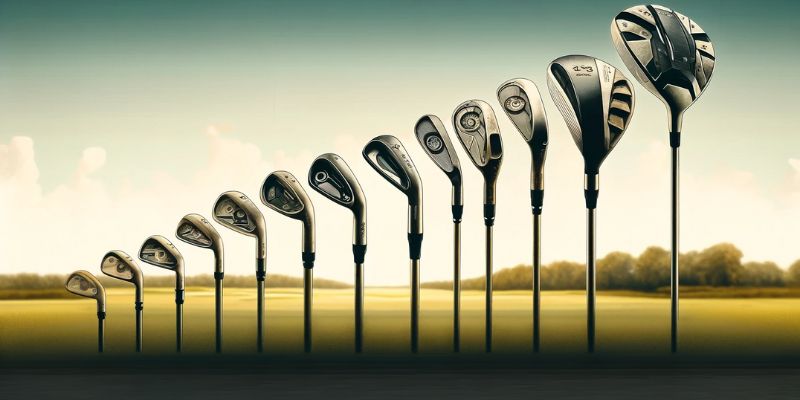The landscape of golf equipment has seen transformative changes over the decades, but perhaps none so impactful as the Evolution of Hybrid Golf Clubs.
From their inception to their current high-tech iterations, hybrids have become a staple in the bags of amateur and professional golfers alike.
This article delves into the journey of these game-changing clubs, underscoring their evolution, technological advancements, and what the future holds.
History of Hybrids
The Evolution of Hybrid Golf Clubs began in the late 1990s when they were introduced as a solution for golfers who struggled with long irons.
Hybrids, or utility clubs as they were initially known, combined the best features of woods and irons.
This design provided easier ball striking capabilities and more forgiveness from various lies.
The first hybrids were met with skepticism, but their acceptance grew as they demonstrated their value on the course—making them indispensable for players facing challenging long shots into greens.
Technological Advancements
As hybrids gained popularity, manufacturers invested heavily in improving their technology.
The Evolution of Hybrid Golf Clubs can be seen clearly in the materials and design techniques that have advanced significantly over the years.
Initially, hybrids utilized similar materials as woods, but soon, innovations like adjustable hosels, variable face thickness, and even changes in the center of gravity began enhancing their performance and versatility.
Modern hybrids now feature sophisticated compositions that include multi-material heads combining steel, carbon, and titanium, which help reduce weight while maximizing launch and spin control.
These technological advancements allow hybrids to cater to a wide range of playing styles and conditions, proving their worth as more than just substitutes for long irons but as crucial elements of strategic club selection.
The Future of Hybrids
Looking forward, the Evolution of Hybrid Golf Clubs is poised to continue alongside rapid technological growth in golf equipment manufacturing.
With the integration of AI and machine learning in club fitting and design, future hybrids will offer even greater customization options to suit individual player needs.
This could involve real-time swing data integration that adjusts club settings mid-round or materials that change properties based on weather conditions.
The potential for smart hybrids, equipped with sensors and connectivity, could revolutionize how golfers interact with their equipment, providing instant feedback to improve technique and consistency.
Such advancements will ensure that hybrids remain at the forefront of golf technology, not just as a bridge between irons and woods, but as innovators in their own right.
The Evolution of Hybrid Golf Clubs illustrates a relentless pursuit of innovation within golf, making hybrids not just a transitional option but a mainstay in the modern golfer’s bag.
Whether as a gift or for personal use, understanding the evolution of these clubs can greatly influence purchasing decisions and overall game strategy, ensuring every golfer finds the perfect match for their bag.
When did hybrid golf clubs first appear?
Hybrid golf clubs started gaining popularity in the late 1990s as golfers discovered their benefits over traditional long irons.
What makes hybrids easier to use than long irons?
Hybrids combine a larger head of a wood and the loft of an iron, providing more forgiveness and making it easier to hit off various lies.
What can we expect from future hybrid golf clubs?
Future hybrids may include customizable technology integrated with real-time analytics to optimize performance for every shot.

